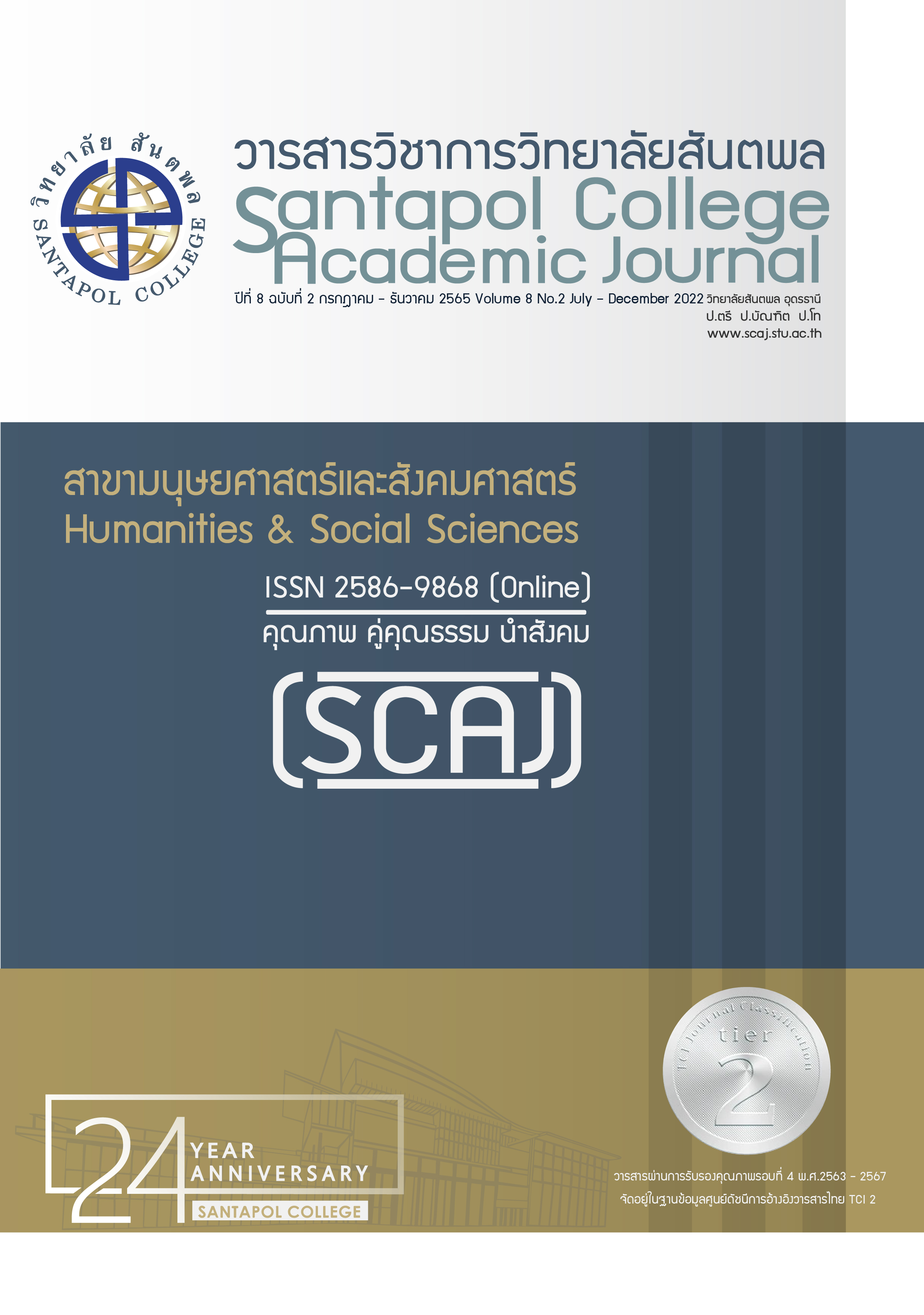ผลกระทบของคุณลักษณะของผู้ประกอบการ ลักษณะองค์กรตามองค์ประกอบขององค์กรสมรรถนะสูงต่อการเจริญเติบโตของวิสาหกิจขนาดกลางและขนาดย่อมของภาคธุรกิจการเกษตรในภูมิภาคตะวันออกของประเทศไทย
Main Article Content
บทคัดย่อ
บทความนี้มีวัตถุประสงค์เพื่อศึกษาและวิเคราะห์อิทธิพลของคุณลักษณะของผู้ประกอบการลักษณะองค์กรตามองค์ประกอบขององค์กรสมรรถนะสูงและระดับการเจริญเติบโตของวิสาหกิจขนาดกลางและขนาดย่อมของภาคธุรกิจการเกษตรในภูมิภาคตะวันออกของประเทศไทย โดยดำเนินการเก็บรวบรวมข้อมูลจากผู้ประกอบการจำนวน 351 คน และนำข้อมูลมาวิเคราะห์ด้วยสถิติเชิงอนุมาน การวิเคราะห์ถดถอยเชิงเส้นอย่างง่าย (Simple Linear Regression) และการวิเคราะห์ถดถอยเชิงเส้นแบบพหุ (Multiple Linear Regression Analysis)
การศึกษานี้พบว่า คุณลักษณะของผู้ประกอบการ โดยเฉพาะปัจจัยด้านการยอมรับความเสี่ยง และการสร้างนวัตกรรมมีผลกระทบเชิงบวกต่อการเจริญเติบโตของธุรกิจอย่างมีนัยสำคัญทางสถิติที่ p < .05 สำหรับลักษณะองค์กรตามองค์ประกอบขององค์กรสมรรถนะสูงโดยเฉพาะปัจจัยด้านการบริหารอย่างเปิดกว้างและลงมือปฏิบัติ และคุณภาพของพนักงานมีผลเชิงบวกต่อการเจริญเติบโตของธุรกิจอย่างมีนัยสำคัญทางสถิติที่ p < .05
Article Details

อนุญาตภายใต้เงื่อนไข Creative Commons Attribution-NonCommercial-NoDerivatives 4.0 International License.
เนื้อหาและข้อมูลในบทความที่ลงตีพิมพ์ในวารสารวิชาการวิทยาลัยสันตพล ถือว่าเป็นข้อคิดเห็นและความรับผิดชอบของผู้เขียนบทความโดยตรง ซึ่งกองบรรณาธิการวารสารไม่จำเป็นต้องเห็นด้วยหรือรับผิดชอบใดๆ
เอกสารอ้างอิง
พสุ เดชะรินทร์. (2019). องค์ความรู้ - อีกทางเลือกหนึ่งในการเติบโตขององค์กร. กรุงเทพธุรกิจ. สืบค้นวันที่ 5 เมษายน 2563 จาก https://www.bangkokbiznews.com/blog/detail/647911.
สถาบันพัฒนาวิสาหกิจขนาดกลางและขนาดย่อม. (2561). SME คนตัวเล็กที่ยิ่งใหญ่. สืบค้นวันที่ 5 เมษายน 2563 จาก https://ismed.or.th/define.php.
สมนึก เอื้อจิระพงษ์พันธ์. (2553). รูปแบบการพัฒนาความสามารถในการจัดการความรู้ของผู้ประกอบการที่มีนวัตกรรมในประเทศไทย. จุฬาลงกรณ์มหาวิทยาลัย.
สำนักงานสภาพัฒนาการเศรษฐกิจและสังคมแห่งชาติ. (2564). รายงานภาวะเศรษฐกิจ ในประเทศ ปี 2564. สืบค้นวันที่ 20 พฤษภาคม 2565.
สำนักงานส่งเสริมวิสาหกิจขนาดกลางและขนาดย่อม. (2564). รายงานสถานการณ์ SME รายปี. สืบค้นวันที่ 20 พฤษภาคม2565 จาก https://www.sme.go.th/th/download.php?modulekey=215&cid=518.
Acs, Z. J., & Armington, C. (2006). Entrepreneurship, geography, and American economic growth: Cambridge University Press.
Anderson, B. S., & Eshima, Y. J. J. o. b. v. (2013). The influence of firm age and intangible resources on the relationship between entrepreneurial orientation and firm growth among Japanese. SMEs, 28(3), 413-429.
Arham, A. (2014). The relationship between leadership behaviour, entrepreneurial orientation and organisational performance in Malaysian small and medium enterprises.
Baghai Mehrdad, S. S., Viguerie S Patrick. (2007). The granularity of growth. The McKinsey Quarterly.
De Waal, A. (2012). What makes a high performance organization: Five validated factors of competitive advantage that apply worldwide: Global Professional Pub.
De Waal, A., Van Nierop, E., & Sloot, L. (2017). Analysing supermarket performance with the high-performance organisation framework. International Journal of Retail & Distribution Management.
Decharin, P. (2006). Report on the Development of Initial Model of Public Agencies; High Performance Organization. Office of the Public Sector Development Commission.
Kaplan, R. S., & Norton, D. P. (2007). Balanced scorecard. In Das Summa Summarum des Management (pp. 137-148): Springer.
Kusumawardhani, A. (2013). The role of entrepreneurial orientation in firm performance: a study of Indonesian SMEs in the furniture industry in Central Java.
Lumpkin, G. T., & Dess, G. G. (1996). Clarifying the entrepreneurial orientation construct and linking it to performance. Academy of management Review, 21(1), 135-172.
Miller, D. (1983). The correlates of entrepreneurship in three types of firms. Management science.
Miller, L. M. (2000). The High-performance organization. Paper presented at the An Assessment of Virtues and Values, prepared for the European Bahá'i Business Forum.
Pattanasing, K., Aujirapongpan, S., & Srimai, S. (2019). Dynamic capabilities and high performance organization of hotel business: empirical investigation into world class tourism destination. Tourism and hospitality management, 25(2), 377-401.
Rattanapongpinyo, T. (2018). Development Strategy for survival and thriving of Thailand SMEs. Paper presented at the Proceeding in The 25th EBES Conference-Berlin, Berlin, Germany.
Soininen, J., Martikainen, M., Puumalainen, K., & Kyläheiko, K. J. I. J. o. P. E. (2012). Entrepreneurial orientation: Growth and profitability of Finnish. small-and medium-sized enterprises, 140(2), 614-621.
Sutheera Atawongsa. (2013). The effect of entrepreneurial orientation and enterprise characteristics toward Thai's SMEs Growth., 13(1), 175-183.
Taylor, P. (2013). The effect of entrepreneurial orientation on the internationalization of SMEs in developing countries. African Journal of Business Management, 17, 19-21.
Yamane, Taro. (1973). Statistics: An introductory analysis (3rd ed.). New York, NY: Harper and Row.
Zbierowski, P. J. E. B., & Review, E. (2019). Positive Deviance as a Mediator in the Relationship Between High Performance Indicators and Entrepreneurial Orientation. 7(2), 217-233.


